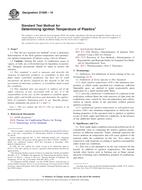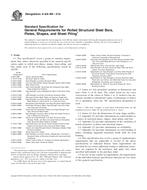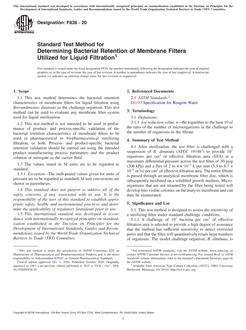1.1 This test method is used to measure the resistance of materials used in protective clothing to penetration by blood-borne pathogens using a surrogate microbe under conditions of continuous liquid contact. Protective clothing material pass/fail determinations are based on the detection of viral penetration.
1.1.1 This test method is not always effective in testing protective clothing materials having thick, inner liners which readily absorb the liquid assay fluid.
1.2 This test method does not apply to all forms or conditions of blood-borne pathogen exposure. Users of the test method should review modes for worker/clothing exposure and assess the appropriateness of this test method for their specific applications.
1.3 This test method has been specifically defined for modeling the viral penetration of Hepatitis (B and C) and Human Immunodeficiency Viruses transmitted in blood and other potentially infectious body fluids. Inferences for protection from other pathogens must be assessed on a case-by-case basis.
1.4 This test method addresses only the performance of materials or certain material constructions (for example, seams) used in protective clothing and determined to be viral resistant. This test method does not address the design, overall construction and components, or interfaces of garments or other factors which may affect the overall protection offered by the protective clothing.
1.5 The values stated in SI units or in other units shall be regarded separately as standard. The values stated in each system must be used independently of the other, without combining values in any way.
1.6 This standard does not purport to address all of the safety concerns, if any, associated with its use. It is the responsibility of the user of this standard to establish appropriate safety and health practices and determine the applicability of regulatory limitations prior to use.
Product Details
- Published:
- 08/10/2003
- Number of Pages:
- 10
- File Size:
- 1 file , 160 KB


